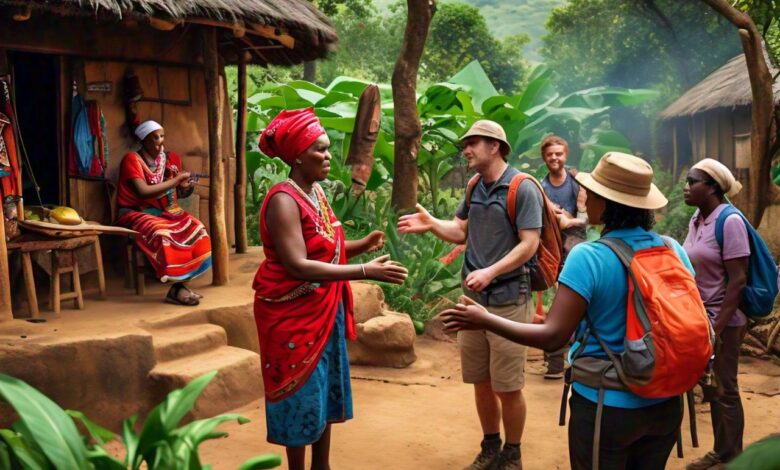Public Sector Support for Community-Based Tourism Initiatives in Zimbabwe:

Community-based tourism initiatives in Zimbabwe are gaining momentum thanks in part to increased support from the public sector. These grassroots projects aim to promote local economic development while preserving cultural heritage and natural environments. Also, as the country looks to diversify its tourism offerings beyond traditional safari experiences, community-based tourism is emerging as a vital component of Zimbabwe’s tourism strategy.
Government Initiatives to support community-based tourism
The Zimbabwean government has recognised the potential of community-based tourism to drive economic growth and job creation in rural areas. Several initiatives are in play to support these projects.
Furthermore, these include the public sector’s involvement in supporting community-based tourism by providing technical expertise and in some instances financial support. Here. the Ministry of Environment, Tourism and Hospitality Industry provided financial assistance to Chesvingo Cultural Village in Masvingo near Great Zimbabwe. Moreover, the ministry helped make homesteads for this village, to attract tourists and help eradicate poverty.
Also, training programs are under implementation to equip local communities with skills to manage and market their own tourism ventures. Additionally, programmes to develop the marginalised communities are part of this support. These include jobs reserved for them and income generation trainings to improve local economies.
These efforts demonstrate the government’s commitment to empowering local communities and fostering sustainable tourism practices.
Impact on Local Communities
Community-based tourism initiatives have had a significant positive impact on rural communities in Zimbabwe. Firstly, they bring income generation. Many local residents have seen improvements in their livelihoods as they benefit from tourism revenue generated in their areas. Secondly, there is cultural preservation. These projects often serve as vehicles for promoting and preserving traditional customs and practices.
Also, environmental conservation is upheld. This is by involving local communities in tourism activities. There is greater awareness and appreciation for protecting natural resources when local communities are involved.
One notable example is the Matobo Hills community-based tourism project, which has helped preserve ancient rock art sites while providing income opportunities for local artists and guides.
Challenges and Opportunities
Furthermore, while community-based tourism offers numerous benefits, challenges remain. There are infrastructure limitations. Some rural areas lack adequate accommodation facilities and transportation links, making it difficult to develop tourism infrastructure. The cost of for capacity building becomes high. There is a need for ongoing training and capacity-building programs to ensure the long-term sustainability of these initiatives, which becomes costly.
However, despite these challenges, experts believe that community-based tourism has the potential to become a significant contributor to Zimbabwe’s economy. Community-based tourism could generate significant revenue for local economies. Also, the sector can create thousands of jobs, primarily in rural areas where unemployment rates are high.
Conclusion
Public sector support for community-based tourism initiatives in Zimbabwe represents a promising approach to sustainable development and poverty reduction. By empowering local communities to take ownership of their tourism assets, the government aims to create a more equitable distribution of tourism benefits and foster long-term economic growth. As these initiatives continue to grow and evolve, they offer hope for a brighter future for many Zimbabweans living in rural areas.




